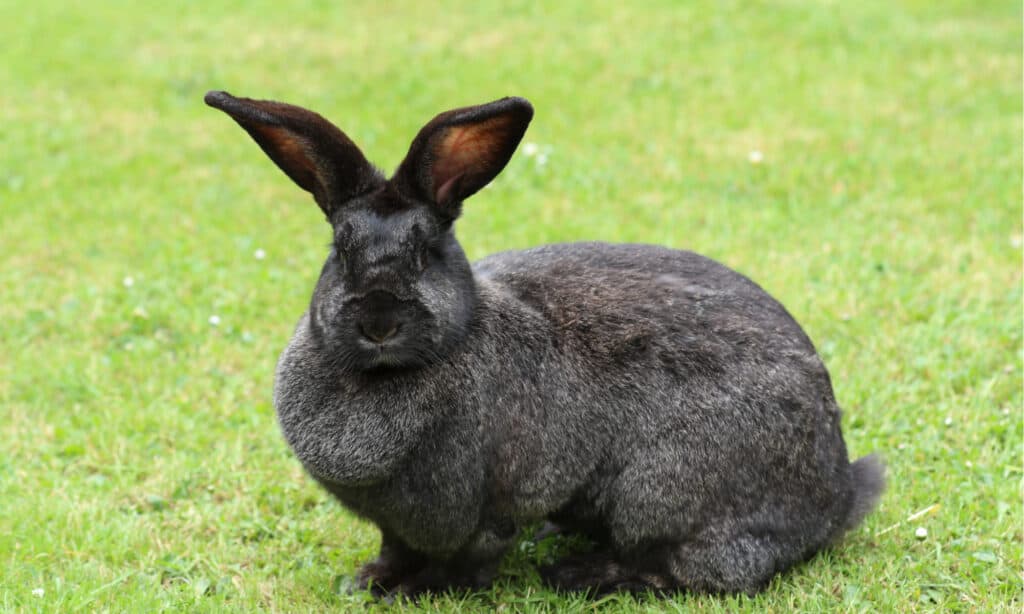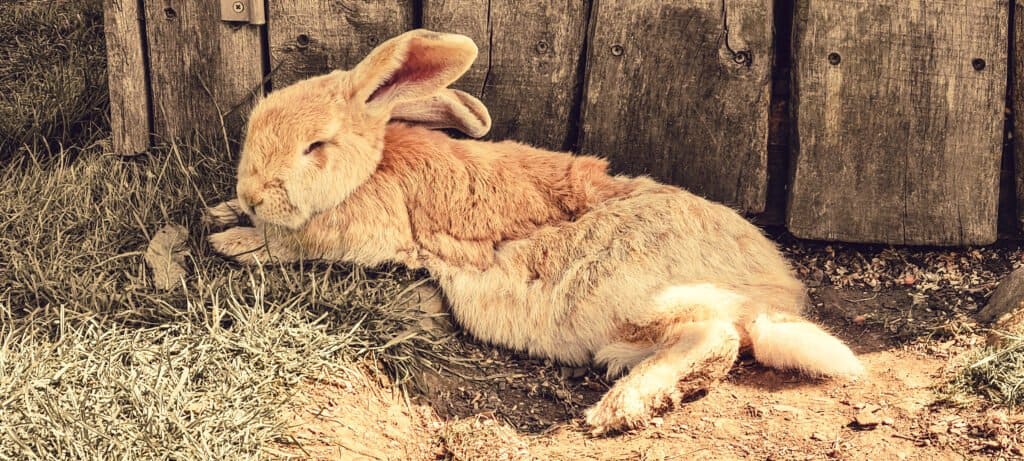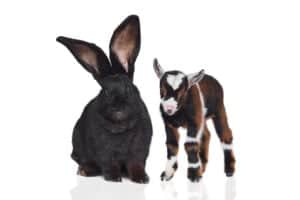These two rabbit breeds can be difficult to tell apart. Both are at the top of nearly every list for the largest rabbits in the world! The Continental Giant is also called the German Giant rabbit or the Conti and is thought to descend from the larger Flemish Giant. Overall, they have similar body types with a few key differences. Distinguishing one from the other often means taking a closer look at their differences!
Continental vs Flemish Giant Rabbits: Key Differences

The key differences between Continental and Flemish Giant rabbits are their size, behavior, and temperament.
The Continental and Flemish Giant rabbit breeds share many common physical characteristics. They have thick, heavy bones, large, broad heads, and long straight ears. In the past, these giant rabbits were bred for meat but are now kept mainly as pets. Though they can appear identical, both have unique differences that set them apart, as explained below.
Continental vs Flemish Giant Rabbits: Appearance

Giant continental rabbits possess thick and long coats.
©Stephen Clarke/Shutterstock.com
Both Continental and Flemish Giants have thick and dense fur; however, Flemish Giants do not have coats as thick or long as some Continental Giants.
Contis have thick, dense fur that comes in two color variations, White and Colored. Colored variations can be black, light grey, dark grey, agouti, opal, or yellow. They have a double coat of guard hairs and a soft underlayer and often need grooming. Continental Giants are not currently recognized by the American Rabbit Breeder’s Association.
Flemish Giants have a smooth, glossy coat that requires little grooming. They have a wide variety of coat colors, from black, light grey, dark grey to white, sandy, blue, or fawn.
Continental vs Flemish Giant Rabbits: Size

Flemish Giants can be much bigger.
©Kayla_Powell/Shutterstock.com
One major difference between Continental and Flemish Giant is that Flemish Giant has no maximum size or weight requirement and can be as large as possible.
Continental Giants are up to 3 feet long and can weigh 16-20 pounds on average. They have defined and well-muscled hindquarters and back legs, and long ears that are up to 25% the length of their bodies. They live an average of 5 years.
The Flemish Giant generally weighs up to 22 pounds. However, the breed can become overweight quite easily, and some Flemish rabbits are the size of a medium dog. They also have powerfully muscled hindquarters and legs, with a noticeable semi-arched body. The ears are 8 inches in length, and this breed has an average lifespan of 5-7 years.
Continental vs Flemish Giant Rabbits: Behavior And Temperament

Flemish Giants are more laid back than Continental Giants.
©Veroja/Shutterstock.com
On average, Flemish and Continental giants are gentle, docile, and even-tempered. This easygoing nature makes both giant breeds excellent family pets. Like most rabbits, they are intelligent and can learn a variety of commands.
The Continental Giant is gentle and easy to train, but the key personality distinction is energy. It is a bit smaller than the Flemish Giant and often has a more playful nature. While it is often content to spend quiet time with its owner, it equally enjoys a good play session.
The Continental Giant is a bit more impatient with being held, and owners also state that the Conti is not a fan of having its feet touched. This breed is reasonably active and prefers playful engagement. Much more laid-back than the Continental Giants, Flemish Giants are cuddly and docile pets. As they are less active on average than most rabbits, they tend to be more content with being held. Unless threatened, the Flemish Giant is often more accepting of young children and one of the most patient rabbit breeds!
Which Giant Rabbit Breed Is Right For You?
If you are interested in adopting a rabbit, you can’t go wrong with either of these giant breeds. Both are docile and gentle animals that can be excellent companions for the right owner. However, it is essential to note that the Flemish Giant has additional health concerns and risks to look out for. Due to their very large size, they are at risk of becoming overweight. Additionally, their low activity can contribute to this concern and should be monitored.
Also, the Continental Giant often needs more grooming due to its thicker and longer coat. This is a concern for all giant rabbit breeds, as sometimes they struggle with maintaining their hygiene. But both breeds benefit from regular grooming sessions. Rabbits groom each other often as a sign of affection, and these sessions can help an owner bond with their pet! For more information on what caring for a pet rabbit entails, check out this article on what rabbits eat!
What Are the Friendliest Rabbit Breeds?

The Rex rabbit breed is among the most popular with rabbit enthusiasts for its beauty and charm.
©Jean / Flickr – License
If you are considering being a proud parent to one or more rabbits, it’s safe to assume you would like your rabbit to be friendly and sociable. Below is a list of the top rabbit breeds that do well interacting with humans.
- Flemish Giant–We’re putting this one at the top, as we already covered it in detail, but for large rabbit breeds, the Flemish Giant definitely ranks high in the friendly department.
- Lionhead–This breed receives its name for its fluffy hair around the face that gives it that lion-like look. These rabbits are smaller in stature but big on interaction, being affectionate, playful, and keen on being held.
- French Lop–French lops are popular for their adorable lop ears, but there’s more to these bunnies than looks. They are highly social, docile, and playful. They are on the larger side, weighing an average of 10-15 lbs, but that just means “more to love” in our book.
- Dutch–Originally developed in the British Isles, Dutch rabbits are one of the more intelligent breeds, which makes them easy to train, but also more desirable for mental stimulation. These rabbits will provide plenty of friendliness to those willing to adopt them as pets.
- Jersey Wooly–If you are a tiny rabbit fan, you’ll score big with the Jersey Wooly, a fluffy breed that originated in New Jersey in the 80s. At an average weight of 2.5-3.5 pounds, these babies are more fragile, but they’ve got big hearts and enjoy interaction.
- Rex–A standard among pet rabbits is the Rex, renowned for its good looks, intelligence, and friendliness. This medium-sized gem of a rabbit will be a great addition to any family looking for a pet rabbit that offers companionship.
The photo featured at the top of this post is © Rita_Kochmarjova/Shutterstock.com
Thank you for reading! Have some feedback for us? Contact the AZ Animals editorial team.







